2013 in charts
A creeping ascent
THE world economy continued to recover from the financial crisis
in 2013, albeit wanly. Stockmarkets around the world rallied (chart 1).
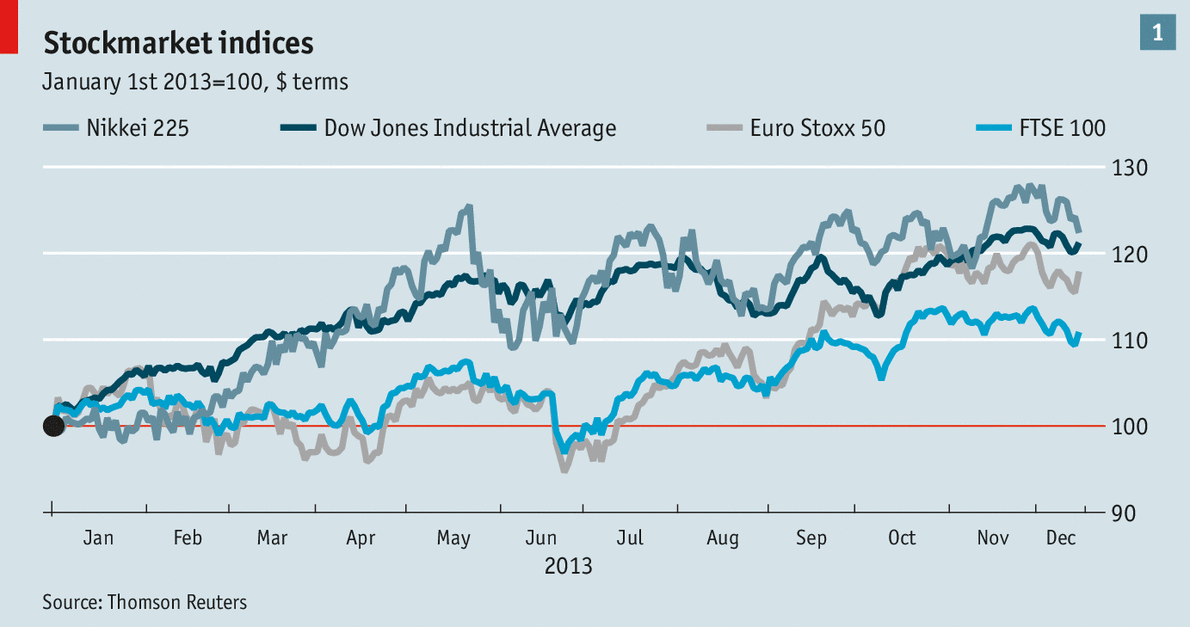 And companies are issuing what is likely to be a record amount of
debt (chart 2), to take advantage of rock-bottom interest rates.
And companies are issuing what is likely to be a record amount of
debt (chart 2), to take advantage of rock-bottom interest rates.
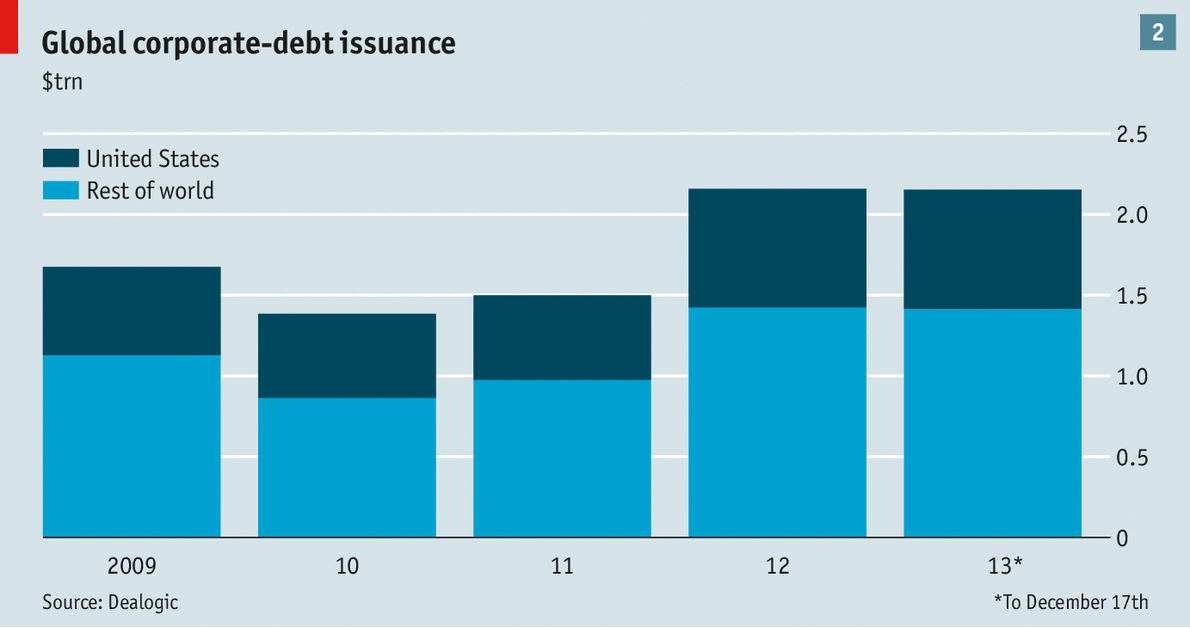 The fear of further debt crises in the rich world receded as growth picked up and budget deficits declined (chart 3).
The fear of further debt crises in the rich world receded as growth picked up and budget deficits declined (chart 3).
 But most developed economies remain little bigger, if at all, than
they were before the crisis struck; the contrast with many developing
countries, notably China, is stark (chart 4).
But most developed economies remain little bigger, if at all, than
they were before the crisis struck; the contrast with many developing
countries, notably China, is stark (chart 4).
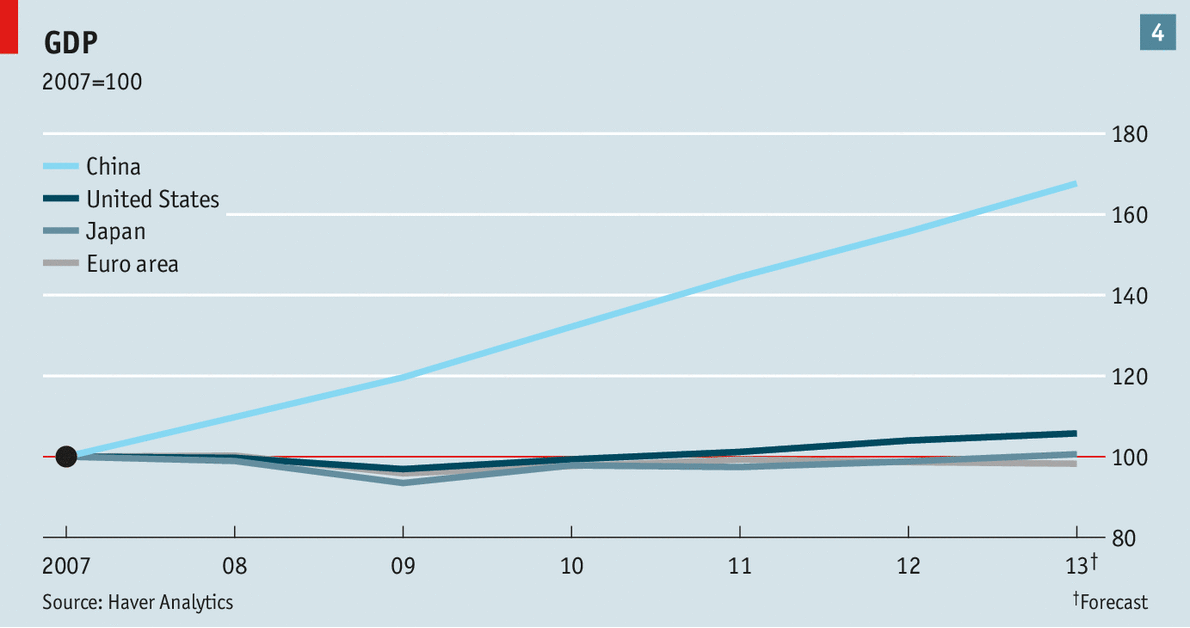 The share of working-age adults in employment remains below its peak in most of the rich world (chart 5).
The share of working-age adults in employment remains below its peak in most of the rich world (chart 5).
 Banks face growing penalties for misconduct during the crisis from emboldened regulators (chart 6).
Banks face growing penalties for misconduct during the crisis from emboldened regulators (chart 6).
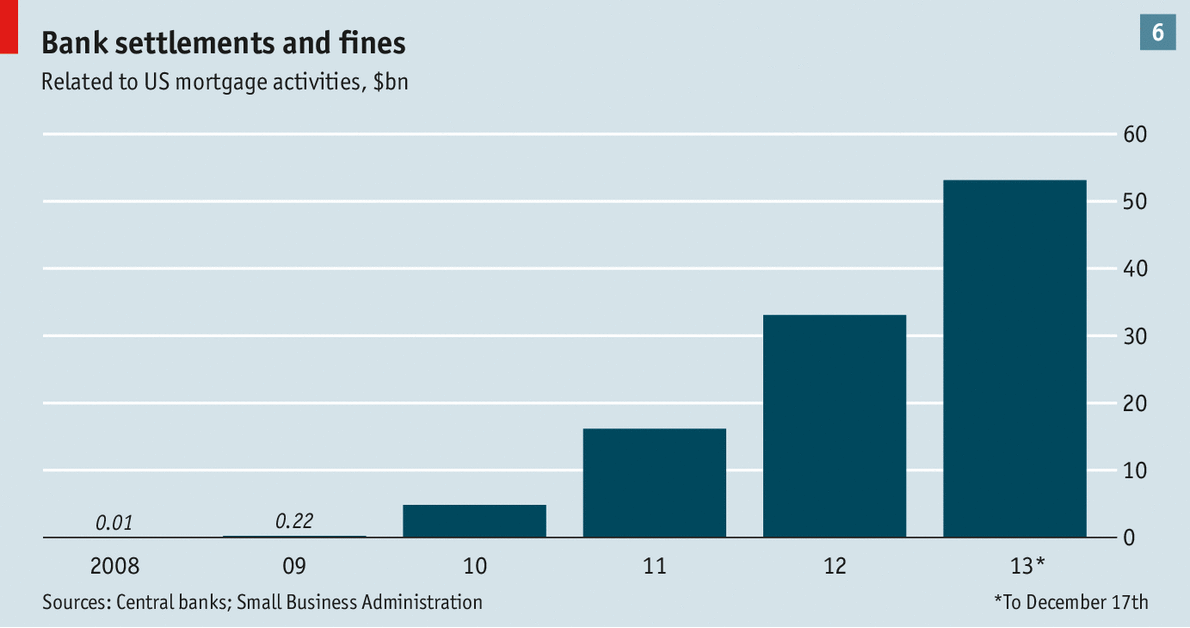 They are also hampered by more elaborate regulation and stricter
capital requirements; in many cases, they are responding by curbing
credit (chart 7).
They are also hampered by more elaborate regulation and stricter
capital requirements; in many cases, they are responding by curbing
credit (chart 7).
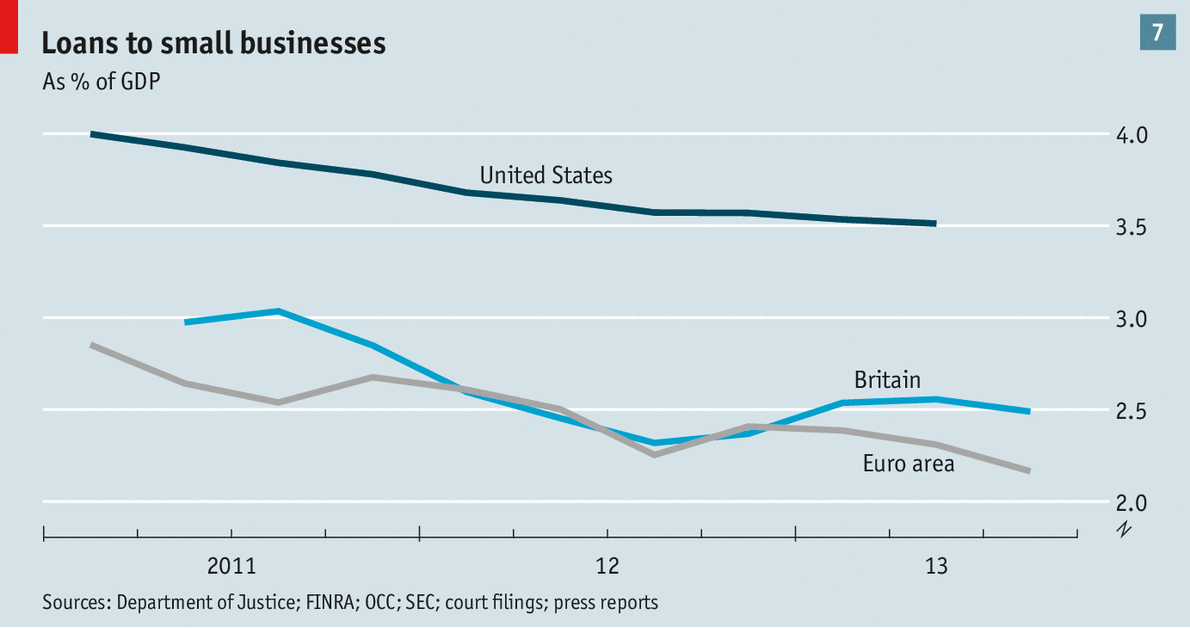 Moreover, even this lacklustre performance is underpinned by central
banks’ extremely loose monetary policy. The Federal Reserve and the Bank
of Japan have continued to print money on a huge scale to purchase
bonds, in the hope of driving down long-term interest rates, while
keeping short-term ones close to zero (chart 8).
Moreover, even this lacklustre performance is underpinned by central
banks’ extremely loose monetary policy. The Federal Reserve and the Bank
of Japan have continued to print money on a huge scale to purchase
bonds, in the hope of driving down long-term interest rates, while
keeping short-term ones close to zero (chart 8).
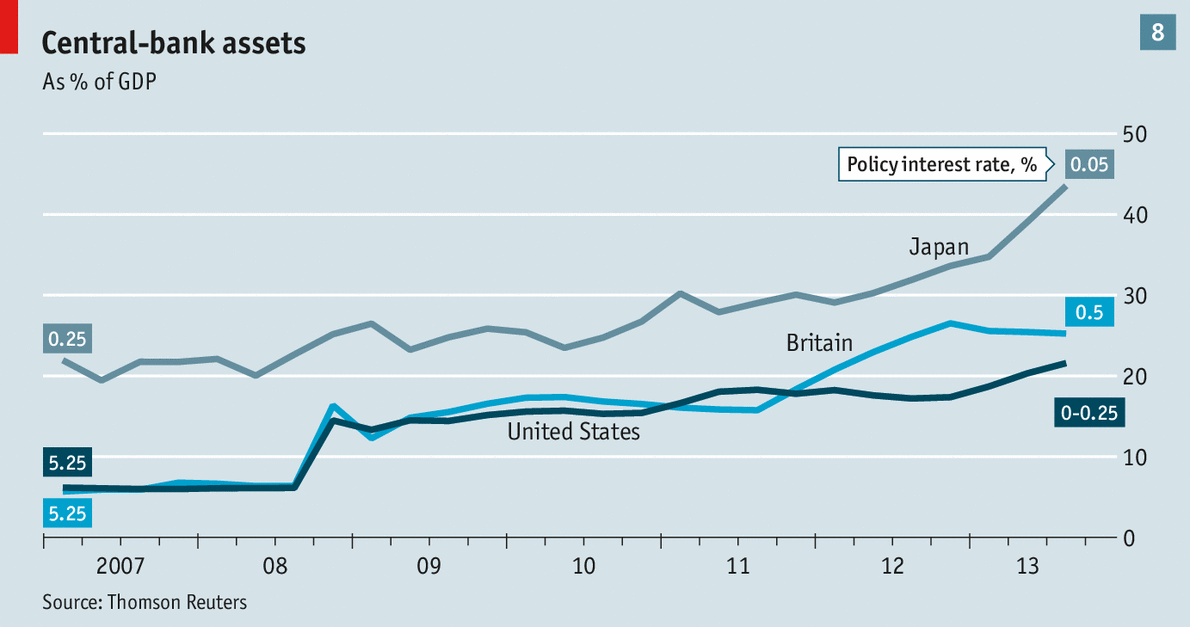 When the Fed suggested in May that it might soon start scaling back
its asset purchases, the mere prospect caused a rout in emerging-market
currencies (chart 9), as investors withdrew their money in search of
higher yields in advanced economies.
When the Fed suggested in May that it might soon start scaling back
its asset purchases, the mere prospect caused a rout in emerging-market
currencies (chart 9), as investors withdrew their money in search of
higher yields in advanced economies.
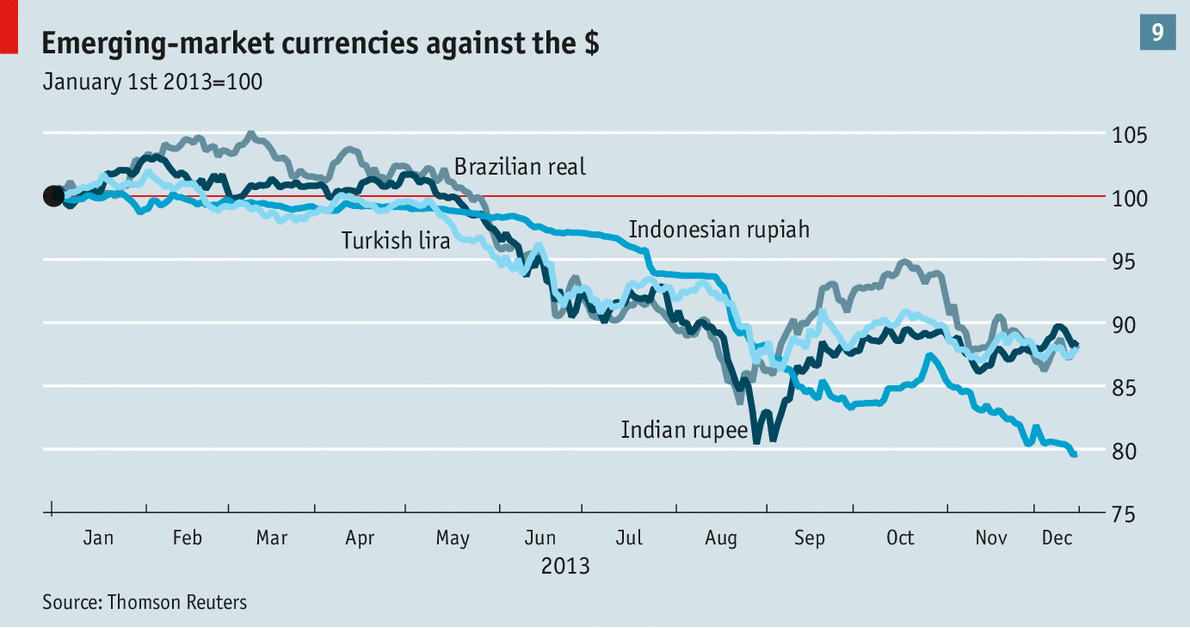









From the print edition: Finance and economics
